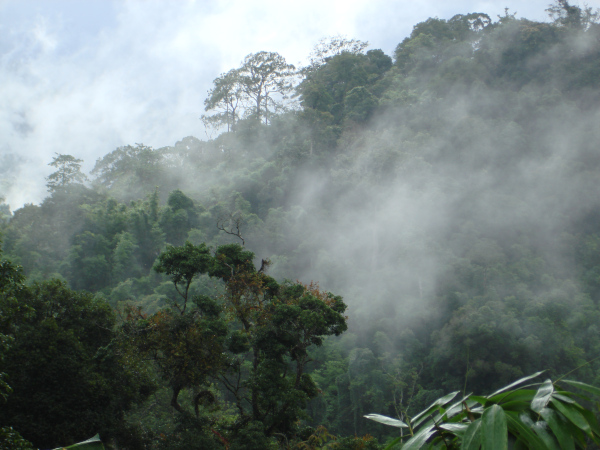 In a paper appearing today, Monday, July 2, 2012, I describe the world’s smallest known fly. It was collected during the TIGER (Thailand Inventory Group for Entomological Resources) project, funded by the National Science Foundation with the grant to Dr. Michael Sharkey of the University of Kentucky and me (as co-PI).
In a paper appearing today, Monday, July 2, 2012, I describe the world’s smallest known fly. It was collected during the TIGER (Thailand Inventory Group for Entomological Resources) project, funded by the National Science Foundation with the grant to Dr. Michael Sharkey of the University of Kentucky and me (as co-PI).
Many stories about small things, especially parasites, quote Jonathan Swift:
“So, naturalists observe, a flea
Hath smaller fleas that on him prey;
And these have smaller still to bite ’em;
And so proceed ad infinitum.”
In this case, the quote is especially apt, because the newly discovered worlds smallest flies are parasites!
The smallest fly in the world is a member of the family Phoridae, and is one of the “ant decapitating flies”. Adult females lay an egg in the body of an ant, and the resulting larva feeds in the ants head, eventually causing the decapitation of its host. Some of these flies are being used to attempt biological control on imported fire ants, and were even featured on an episode of the popular television show “King of the Hill”.
Because these flies usually develop in the head of their host ant, they are smaller than their hosts. One would think that the smallest ants would be therefore immune to these nasty parasites, as their heads are vanishingly small. But the world’s smallest fly is one of these ant killers, and at the astoundingly small body length of 0.4 mm, these flies can probably decapitate ants with heads as small as 0.5 mm. That is pretty close to the smallest size that ants can get!
When we think of animals that are small, usually a fly or a flea come to mind. Let’s forget about fleas; they are comparative monsters at around 1-2 mm in length. But what about flies?
The common house fly is something that we think of as being small. In the world of tiny insects, however, they are virtual Godzillas at a whopping 6 mm.
Many flies are much smaller than this. Fruit flies that you see hovering over overripe bananas, for instance, are about 2 mm long, one third of the size of the “giant” house fly.
Some of the biting flies are much smaller than this. One aptly named family of flies has the common name “no see ‘um”, because of their almost invisibility when they are biting you. These flies are getting really small, usually around 1 mm in length.
The world’s smallest fly is 0.4 mm in length. Here is a microscope slide, 1″ x 3″ size, with the holotype specimen of the fly mounted on it. It’s unimaginably small, smaller than a flake of pepper you shake out of the pepper shaker.

holotype specimen of Euryplatea nanaknihali Brown
Do you see it, within the small circle, to the right and slightly above center?
The world smallest fly doesn’t really look like a fly. It’s one of those weird phorids whose body form we call “limuloid”, after Limulus, the horseshoe crab. It is a defensive body form that allows the flies to live in the ant nest which, based on this body structure, is probably part of the fly’s life. It has short wings, but they are functional sized, so this fly could easily fly from ant nest to ant nest. It also has a sharply pointed tip of the abdomen, indicating that it is a parasitic species.
My research is funded by the National Science Foundation, currently grant No. DEB-1025922.
Any opinions, findings, and conclusions or recommendations expressed in this material are those of the author and do not necessarily reflect the views of the National Science Foundation.
















